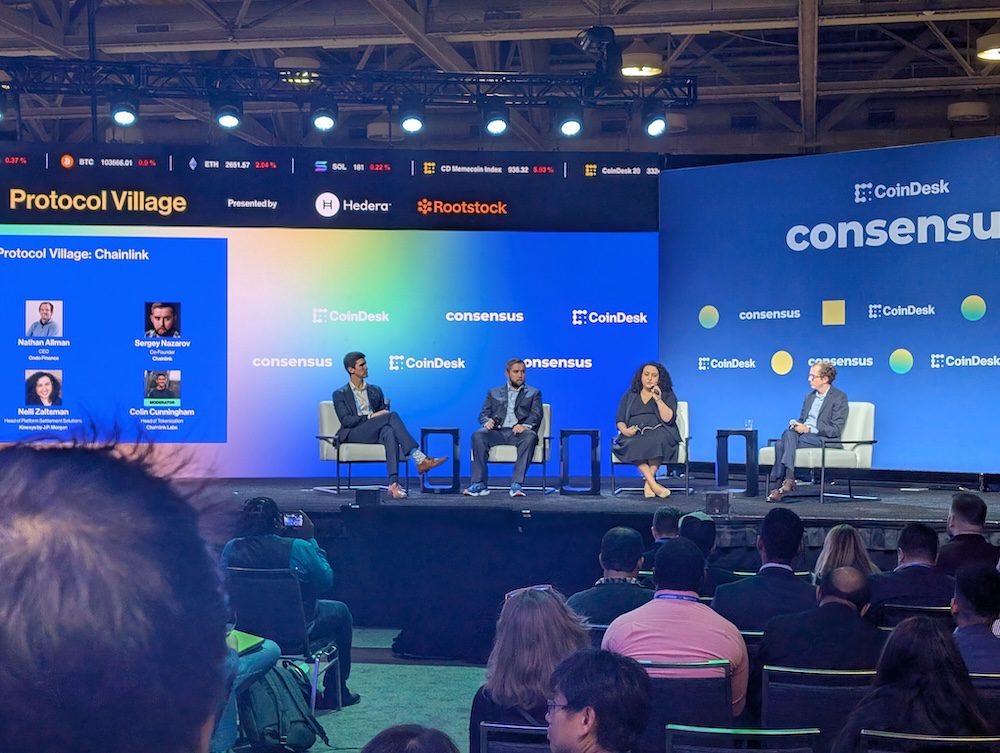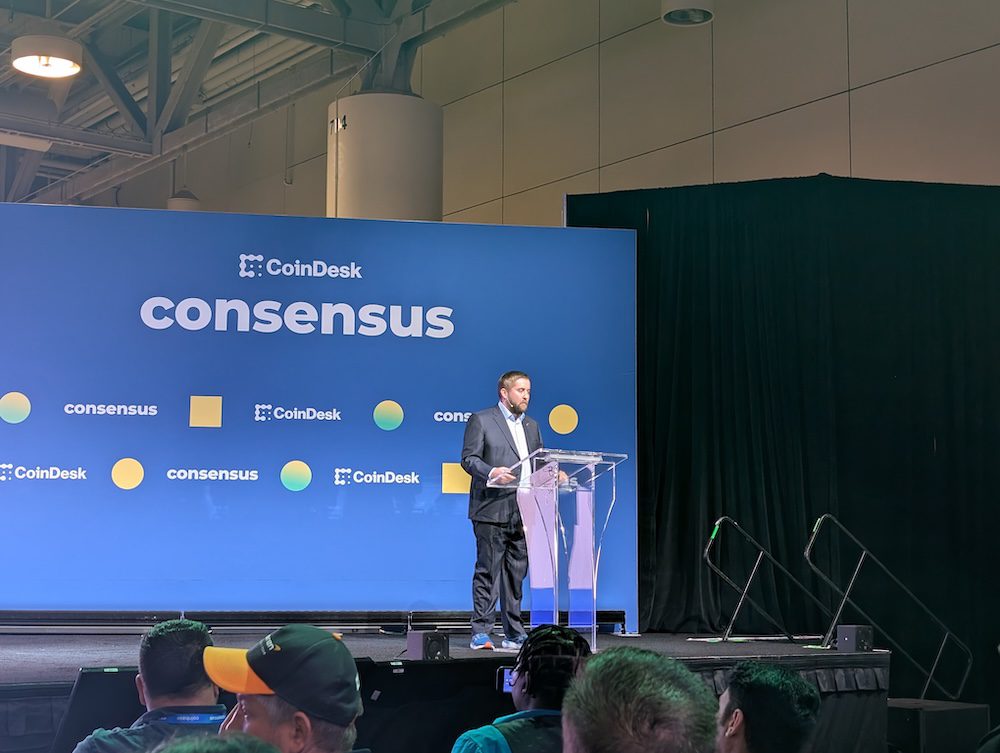Asset tokenization is poised to revolutionize the flow of capital across traditional markets, according to Sergey Nazarov, co-founder of Chainlink. Nazarov, speaking at Consensus 2025 in Toronto, emphasized that this shift will significantly boost capital velocity in major asset classes like treasuries, equities, private credit, commercial debt, and real estate.
“There are two critical elements to this equation: the asset itself and the payment mechanism. We need more high-quality assets available on-chain, coupled with frictionless payment systems that existing institutions can readily adopt,” Nazarov stated on May 14.
This announcement coincided with Chainlink’s collaboration with Kinexys, JP Morgan’s institutional-grade tokenized asset blockchain network, and Ondo Finance, a digital asset firm. The partnership aims to create payment rails for institutions trading tokenized real-world assets on-chain.
The collaboration involved testing the exchange of Ondo’s US Government Treasuries Fund (OUSG), a tokenized short-term US debt fund, with Kinexys, utilizing Chainlink’s Runtime Environment. This framework facilitates seamless connectivity between legacy financial systems and blockchains within a unified environment.
“Chainlink’s objective is to initiate a positive feedback loop that drives exponential growth for the entire industry. We aim to increase the number of assets available on-chain and expand the accessibility of on-chain payment systems,” Nazarov explained.

This partnership signals growing institutional acceptance of cryptocurrencies and Web3 technologies, spurred by favorable regulatory developments in the United States following the 2024 elections and the departure of Gary Gensler, former chair of the US Securities and Exchange Commission (SEC).
Key Takeaways of Asset Tokenization
- Increased Capital Velocity: Tokenization streamlines asset transfers, leading to faster transaction times and improved liquidity.
- Enhanced Transparency: Blockchain technology provides a transparent and auditable record of asset ownership and transactions.
- Fractional Ownership: Tokenization enables fractional ownership of assets, making them more accessible to a wider range of investors.
- Reduced Costs: Automation and reduced intermediaries lower transaction costs associated with asset management.
Chainlink’s Role in Tokenization
Chainlink plays a vital role in the tokenization ecosystem by providing secure and reliable data feeds to smart contracts. This ensures that on-chain representations of real-world assets accurately reflect their value and status.
Chainlink’s decentralized oracle network connects smart contracts on blockchains with real-world data, APIs, and off-chain systems. Nazarov highlighted the company’s role in coordinating transactions between financial institutions, asset issuers, and regulators. Chainlink aims to bridge the gap between traditional finance and the world of decentralized finance (DeFi).
Chainlink markets its “Runtime Environment” as a modern upgrade to outdated legacy financial systems’ protocols. This includes replacing technologies like the Common Business-Oriented Language (COBOL), an operating language developed in 1959 for ATMs, and the Java Runtime architecture used in online banking applications.

The Importance of US Competitiveness in Tokenized Assets
Nazarov has consistently emphasized the need for the United States to establish a strong competitive advantage in tokenized assets to maintain its attractiveness and relevance in the global financial landscape. By embracing tokenization, the US can position itself as a leader in the future of finance.
What is Asset Tokenization?
Asset tokenization is the process of representing real-world assets, such as real estate, commodities, or intellectual property, as digital tokens on a blockchain. Each token represents a fraction of the underlying asset, allowing for easier trading, fractional ownership, and increased liquidity.
Benefits of Asset Tokenization:
- Increased Liquidity: Tokenized assets can be easily traded on digital exchanges, increasing their liquidity compared to traditional assets.
- Fractional Ownership: Tokenization allows investors to own a fraction of high-value assets, making them more accessible.
- Reduced Costs: The process of tokenizing assets can reduce administrative costs, legal fees, and other expenses associated with traditional asset management.
- Improved Transparency: Blockchain technology provides a transparent and immutable record of ownership and transactions, reducing fraud and increasing trust.
- Faster Transactions: Tokenized assets can be transferred more quickly and efficiently compared to traditional asset transfers.
In conclusion, asset tokenization, facilitated by platforms like Chainlink and partnerships with institutions like JP Morgan and Ondo Finance, is poised to transform the financial industry. It promises to unlock new opportunities for investors, increase market efficiency, and drive innovation in the world of finance.